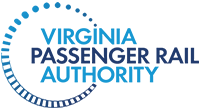The Virginia Passenger Rail Authority (VPRA) investigated how much widening of the Bicycle-Pedestrian Bridge component of the Long Bridge Project could be accommodated given the project’s site constraints as well as impacts to the project’s schedule, budget, existing design approvals, permitting, and constructability. While widening from 14-feet to 16-feet will have only minor impacts, widening more than this will greatly impact all of these aspects of the project. Given this, VPRA has a agreed to widen the bridge to 16-feet from the 14-feet that was approved in the Final Environmental Impact Statement (FEIS)/Record of Decision (ROD).
Widening beyond 16-feet is problematic for the following reasons. The tightest horizontal clearance constraints occur adjacent to the Mount Vernon Trail ramp near the Virginia shoreline and at the Ohio Drive SW landing in East Potomac Park, as these ramps down take up essentially as much space as the bike-ped bridge itself. See the diagram below:

Widening to 16-feet brings the bike-ped bridge ramps on either side of the bridge within 6-feet of the WMATA Yellow Line Bridge Air Rights. We are not allowed to work within this Air Rights space without special accommodations, and the future contractor will need that 6-feet between the Air Rights space and the bike-ped bridge ramps to build the Long Bridge Project.
A few of the impacts if the bridge is widened more than to 16’:
- Significant increase in pier and truss member sizes to accommodate much greater loads, increase impacts to Potomac River bottom and Submerged Aquatic Vegetation areas, affecting permitting and the size of any mitigation projects required to offset this impact;
- Increase in construction cost of up to $20M-$25M, on top of the $5M to widen from 14’ to 16’;
- Major re-work and delay to the engineering schedule;
- Increase in construction schedule of the bridge as substructures and truss members require increased equipment sizes, materials, and durations while reducing workspace to access and construct the bridges between the WMATA Yellow Line Bridge and the bike-ped bridge;
- The need for larger piers and ramps will result in a bulkier superstructure—the opposite effect from what aesthetic design review agencies have requested.
The public has shown great interest in this component of the Long Bridge Project and we greatly appreciate the continued engagement. We look forward to working with all stakeholders as the Long Bridge Project enters its next phase. We will be hosting public meeting in Spring 2023 and as always, members of the public are encouaged to contact us to share their input and ask questions.
